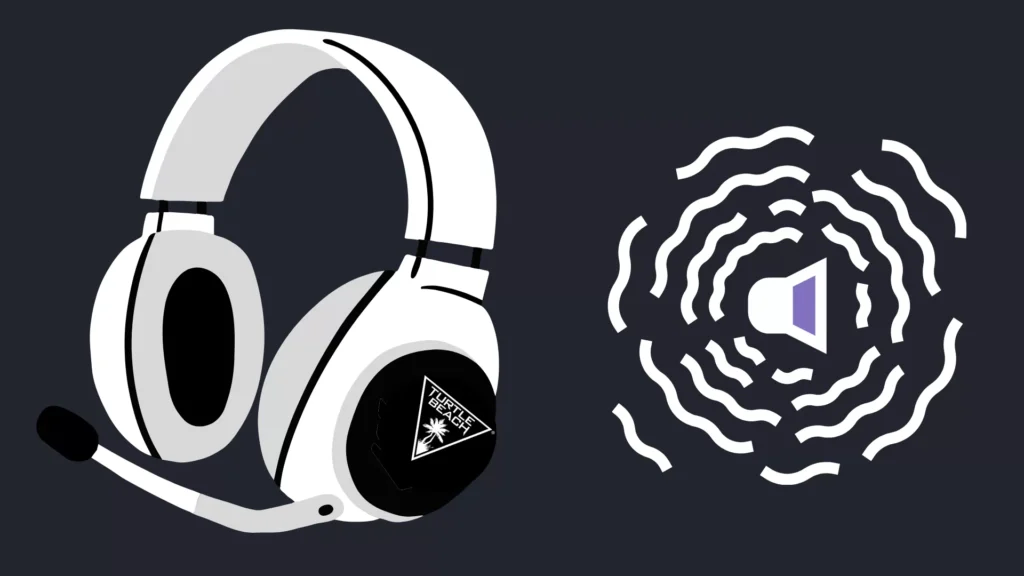How to Fix Turtle Beach Headset Echoing

Turtle Beach’s line of headsets is great, especially for their price points. They are good for pretty much all purposes, including gaming, voice chatting, and listening to music. However, as good as they may be, they occasionally have problems, just like any other devices. One problem that some users have reported when dealing with their Turtle Beach headsets is an issue with echoing. But how do you fix this?
If other people in voice chat can hear their voice through your microphone, you can change settings to make it occur less often. Lowering the volume can help this, and you can also change how sensitive your microphone is. You can also change the Game/Chat balance of your headset.
But how do you do these things? And what if the echo does not go away?
How to Fix Turtle Beach Headset Echoing:
Make sure that the microphone and headset are connected properly
Sometimes, things with your headset may have problems if the cords are not connected properly. None of the cords’ ends are interchangeable, so be careful that you do not mix them up and put them in the wrong ports. When connecting to the SuperAmp, for example, this requires you to connect the cord with the three black lines into the SuperAmp, and the end with a headset icon plugged into the headset. Make sure that both ends of the cord are adequately inserted.
Enable echo cancellation features in the program
Some programs have built-in echo cancellation or suppression features, such as Discord. To do this, follow these steps:
- Open Settings in Discord (the gear icon)
- Select Voice & Video
- Toggle Echo Cancellation from Off to On
Lower the volume of your device
This is a pretty bogstandard solution, but one that will help in a lot of situations. By turning down the volume on your device, the others in voice chat will be less able to hear their own voice picked up over the headset. You can either control the volume via the SuperAmp included with the Turtle Beach headset, or you may use the Turtle Beach app that connects to your headset.
Adjust the individual volume levels of programs on your device
If you are not willing to sacrifice the volume of the game you’re playing, the good news is that on PC, you can modify the volume of the game to be louder than your friends’ audio levels. On a Windows PC, you can raise the game volume by holding the Windows key and G at the same time before releasing. At this point, you can raise or lower the volume of individual programs until you find the appropriate level, among other things. You can even completely mute the game altogether.
Adjust your microphone’s sensitivity levels
You are able to adjust how sensitive your microphone is. The more sensitive the microphone is, the more it is going to pick up. A very sensitive microphone can not only pick up other people’s voices on a call, but it can also pick up game audio, which can be equally distracting. Programs often have individual microphone sensitivity levels, such as Discord, which you can adjust to very specific levels. Meanwhile, your Speaker icon on the taskbar in Windows 10 allows you to do this. Select the Open Volume mixer option, and then adjust the levels of the programs you have open.
You can also, using the Turtle Rock app, adjust the game and chat mix by sliding it to one end or the other until you find an appropriate setting.
Adjust the individual volumes of people in voice chat
Depending on the program and device, you may be more or less able to control the volume levels of people in the party chat. For example, if you are voice chatting with people using the Discord app, you can control the volume of individual users by right-clicking their names on the voice call. You will see a meter, which by default is set right in the middle. You can lower everyone whose voice is being picked up by your mic.
See if the voices are coming through the TV or the monitor’s speakers
While you may have a headset plugged in, it is possible for another audio device to play audio. Because of this, the mic may be picking up their voices from there. This is a setting one can enable on devices such as the Xbox One. To fix this on Xbox One:
- Push the Xbox icon on the Home menu, which opens up the Xbox Guide
- Select Settings, and then General
- Select Volume & audio output, and then select Party chat output
- From here, select Headset to prevent the party chat from playing on the television or monitor in use.
Your own voice is echoing on your PC
While echoing features are usually people hearing their own voice through your microphone, it is still possible to hear your own voice echoing. Hearing your voice through your headset is actually a feature of the Turtle Beach headset called Mic Monitor. This feature is designed to allow you to hear how you sound through your headset to prevent you from being too loud for others. This can be toggled via a slider, including completely off. This feature has some screwiness with use on a PC, however.
When used on a PC, the mic signal is sent into the software you are using it with, at which point the sound is processed and routed back to be played through the speakers via your sound card or headset. If your PC and/or sound card has a high level of latency, you may wind up hearing your delayed voice through these means. The best way to avoid this happening is to simply turn the Mic Monitor feature off.
Contact the support team
If you are still having trouble getting the echoing to stop, the best suggestion here would be to contact Turtle Beach support. They should be able to help troubleshoot your specific issues.





